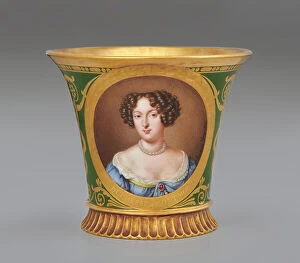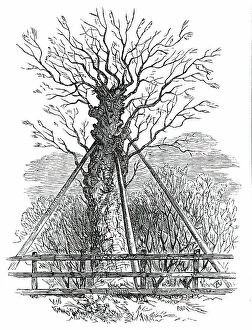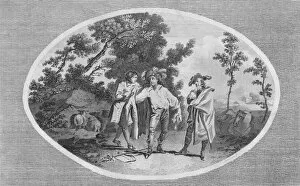James Fitzroy Collection
James Fitzroy, also known as the Duke of Monmouth, was a prominent figure in English history during the late 17th century
For sale as Licensed Images
Choose your image, Select your licence and Download the media
James Fitzroy, also known as the Duke of Monmouth, was a prominent figure in English history during the late 17th century. Born to King Charles II and his mistress Lucy Walter, James's life was marked by both triumph and tragedy. In an engraving depicting him as the Duke of Monmouth, we see a nobleman with a regal air about him. His exchange of clothes with a shepherd in 1792 symbolizes his desire for simplicity and connection with common people. However, not all aspects of James's life were idyllic. The capture of Monmouth on July 6th, 1685 portrays the dramatic end to his rebellion against King James II. This event led to his subsequent execution on Tower Hill in London just nine days later. In another artwork from around 1920, we witness James pleading for his life before those who held it in their hands, and is a poignant moment that showcases both vulnerability and desperation. The Battle of Bothwell Bridge in 1679 further highlights James's involvement in political turmoil. As he fought alongside fellow rebels against religious persecution imposed by the government at that time, he became an emblematic figure for many seeking change. Through a letter written by James himself to Catherine of Braganza in Ringwood on July 9th, 1685, we gain insight into his thoughts and emotions during this tumultuous period. It serves as evidence that even amidst chaos and uncertainty, he maintained connections within royal circles. While some recognized him solely as James Scott or even disputed whether he should be considered James II of England altogether (as depicted in E Scriven's artwork from1826), there is no denying the impact he had on British history. Archibald Campbell's portrait from1828 captures another key player during this era: The Earl of Argyll - one who would eventually face similar fate due to political unrest like Monmouth did years before.

















